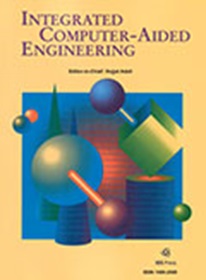An outstanding platform for ground-breaking cross-disciplinary research
IF 5.3
2区 计算机科学
Q1 COMPUTER SCIENCE, ARTIFICIAL INTELLIGENCE
引用次数: 0
Abstract
According to the Cambridge Dictionary, “engineering” is the study of using scientific principles to design and build machines, structures, and other things, including bridges, roads, vehicles, and buildings. Some ingenious examples of early and yet advanced engineering solutions are the automatic sliding doors powered by steam engines designed by Heron of Alexandria in the first century AD or the qanat irrigation system in Persia in the eighth century BC at the time of the Assyrian king Sargon II. In a broad sense, engineering has been with us for millennia and is a distinctive trait of human nature. The design of engineering solutions for even relatively simple tasks very often requires the use/assistance of intermediate tools. As demonstrated in experiments on animal psychology and in particular on a famous chimpanzee called Sultan [1], while animals of other species can use tools to solve tasks they appear to be incapable to build tools to solve tasks. Thus, humans apparently are the only species able to apply a creative approach to problem solving which may involve multiple phases of planning and the construction of intermediate tools. In modern times, a very important and widely used tool in engineering is the computer. Since its theoretical definition by Alan Turing [2], computers have undergone major changes in their hardware, e.g. in power and size, and the ways they are used. Over the past decades, computers are considered multipurpose devices that can usefully assist an engineer in their work. According to the Encyclopedia Britannica, Computer-Aided Engineering (CAE) is the integration of design and manufacturing into a system under the direct control of digital computers. Of course, the meaning of CAE and what a computer can do for an engineer changed over the past decades and continues to change. Founded by a visionary, impactful and highly influential scholar of modern times, “based on the premise that interdisciplinary thinking and synergistic collaboration of disciplines can solve complex problems, open new frontiers, and lead to true innovations and breakthroughs with a focus on the integration of leading edge and emerging computer technologies for innovative solution of engineering problems,” as noted in the introduction to the inaugural issue of the journal published in July 1993, Integrated Computer-Aided Engineering (ICAE) publishes the latest research about CAE. Professor Hojjat Adeli, as the founder and Editor-in-Chief of ICAE, led the evolution of CAE while shaping the subject and anticipating its coming trends. ICAE is a forum of outstanding quality that has the reputation of being a top journal in Computer Science and Engineering. For example, ICAE has been consistently for many years in the first Quartile according to the Web of Science in the categories of Computer Science, Artificial Intelligence, and Computer Science Interdisciplinary Applications. Professor Adeli achieved this extraordinary result thanks to his meticulous and rigorous hard work. Every submission must be accompanied by the statement that “it is original unpublished work and the manuscript or any variation of it has not been submitted to another publication previously.” Also, the prospective authors are requested to submit the list of the most impactful researchers in the same field of the submitted manuscript to verify their awareness of the latest developments and leaders in the field. The review process of each manuscript is handled with impeccable rigor by Professor Adeli. Each paper is reviewed by at least five expert reviewers. Some of these reviewers are authors of other papers submitted to ICAE while the other reviewers are selected from the Society of ICAE created by Professor Adeli over the past three decades. This society开创性跨学科研究的杰出平台
根据《剑桥词典》,“工程”是指利用科学原理设计和建造机器、结构和其他东西的研究,包括桥梁、道路、车辆和建筑。早期但先进的工程解决方案的一些巧妙例子是公元一世纪亚历山大的赫伦设计的蒸汽机驱动的自动滑动门,或者公元前八世纪亚述国王萨尔贡二世时期波斯的qanat灌溉系统。从广义上讲,工程已经伴随我们几千年了,是人性的一个独特特征。即使是相对简单的任务的工程解决方案的设计也经常需要使用/协助中间工具。正如动物心理学实验所证明的那样,尤其是在一种名为苏丹的著名黑猩猩身上[1],虽然其他物种的动物可以使用工具来解决任务,但它们似乎无法构建解决任务的工具。因此,人类显然是唯一能够应用创造性方法解决问题的物种,这可能涉及多个阶段的规划和中间工具的构建。在现代,一个非常重要和广泛使用的工程工具是计算机。自从Alan Turing[2]对其进行理论定义以来,计算机的硬件发生了重大变化,例如在功率和大小以及使用方式方面。在过去的几十年里,计算机被认为是多用途设备,可以有效地帮助工程师工作。根据《大英百科全书》,计算机辅助工程(CAE)是在数字计算机的直接控制下,将设计和制造集成到一个系统中。当然,CAE的意义以及计算机可以为工程师做什么在过去几十年中发生了变化,并在不断变化。由一位富有远见、影响力和影响力的现代学者创立,“基于跨学科思维和学科协同合作可以解决复杂问题、开辟新领域、实现真正的创新和突破的前提,重点是集成领先和新兴的计算机技术,以创新解决工程问题,”该杂志创刊号的引言中指出综合计算机辅助工程(ICAE)发表于1993年7月,发表了关于CAE的最新研究。Hojjat Adeli教授作为ICAE的创始人和主编,领导了CAE的发展,同时塑造了这一主题并预测了其未来的趋势。ICAE是一个质量卓越的论坛,被誉为计算机科学与工程领域的顶级期刊。例如,ICAE多年来一直在计算机科学、人工智能和计算机科学跨学科应用的第一个四分位数中。阿德利教授之所以能取得这样非凡的成绩,得益于他一丝不苟、一丝不苟的努力。每一份提交的作品都必须附有声明,“这是未发表的原创作品,手稿或其任何变体以前从未提交给另一份出版物。”此外,要求潜在作者提交所提交手稿同一领域最具影响力的研究人员名单,以验证他们对该领域最新发展和领导者的认识。阿德利教授对每份手稿的审查过程都一丝不苟。每篇论文至少由五名专家评审员进行评审。其中一些评审员是提交给ICAE的其他论文的作者,而其他评审员则是从Adeli教授在过去三十年中创建的ICAE协会中选出的。这个社会
本文章由计算机程序翻译,如有差异,请以英文原文为准。
求助全文
约1分钟内获得全文
求助全文
来源期刊

Integrated Computer-Aided Engineering
工程技术-工程:综合
CiteScore
9.90
自引率
21.50%
发文量
21
审稿时长
>12 weeks
期刊介绍:
Integrated Computer-Aided Engineering (ICAE) was founded in 1993. "Based on the premise that interdisciplinary thinking and synergistic collaboration of disciplines can solve complex problems, open new frontiers, and lead to true innovations and breakthroughs, the cornerstone of industrial competitiveness and advancement of the society" as noted in the inaugural issue of the journal.
The focus of ICAE is the integration of leading edge and emerging computer and information technologies for innovative solution of engineering problems. The journal fosters interdisciplinary research and presents a unique forum for innovative computer-aided engineering. It also publishes novel industrial applications of CAE, thus helping to bring new computational paradigms from research labs and classrooms to reality. Areas covered by the journal include (but are not limited to) artificial intelligence, advanced signal processing, biologically inspired computing, cognitive modeling, concurrent engineering, database management, distributed computing, evolutionary computing, fuzzy logic, genetic algorithms, geometric modeling, intelligent and adaptive systems, internet-based technologies, knowledge discovery and engineering, machine learning, mechatronics, mobile computing, multimedia technologies, networking, neural network computing, object-oriented systems, optimization and search, parallel processing, robotics virtual reality, and visualization techniques.
 求助内容:
求助内容: 应助结果提醒方式:
应助结果提醒方式:


